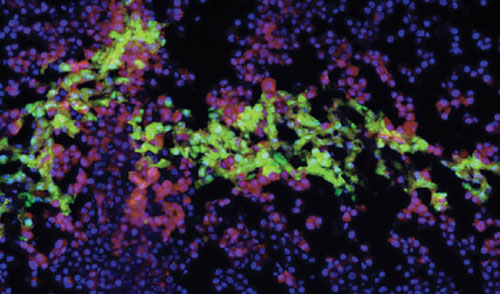| Jan 20, 2014 |
3D Bioprinting platform to create functional liver tissues (w/video)
|
|
(Nanowerk News) Organovo announced that they are joining together with two institutes from the National Institutes of Health (NIH) to help scientists develop more reliable tools for bringing safer, more effective treatments to patients on a faster timeline. Organovo is collaborating with the National Center for Advancing Translational Sciences (NCATS) and the National Eye Institute (NEI) to develop better and more clinically predictive tissue models using Organovo's NovoGen MMX Bioprinter®. Organovo will collaborate with NCATS and NEI in using the NovoGen Bioprinting platform to create three-dimensional, architecturally correct, functional living tissues.
|
|
|
|
See how this bioprinting process can create functional human tissues starting with cells from any source.
|
|
"Researchers who develop new therapies for patients are too often hampered by animal models and traditional cell culture models that are poor predictors of drug efficacy and toxicity in human beings," says Keith Murphy, Organovo's Chief Executive Officer. "Our 3D printer creates living human tissues that more closely reproduce in vivo human tissues. In collaboration with NIH, which has worked to highlight and address the critical need for better models that can lead to better drugs, we hope to create tissue models that give researchers a much more accurate view of how drugs will behave in human beings before those drugs ever enter clinical trials."
|
 |
| This image is a cross-section of bioprinted human liver tissue demonstrating compartmentalization between the hepatocytes (shown as blue nuclei), endothelial cells (red), and hepatic stellate cells (green).
|
|
"Developing collaborations like this are central to NCATS' mission," said NCATS Director Christopher P. Austin, M.D. "We look forward to working with Organovo and our colleagues at NEI to develop a printable eye tissue. We also plan to develop additional tissue models that complement and leverage our current Tissue Chip and compound screening programs."
|
|
"This technology could provide us with a renewable and easy-to-manipulate source of functional eye tissue," said NEI Director Paul A. Sieving, M.D., Ph.D. "Printable eye tissue could be used to identify disease pathways and to screen for and discover new therapeutic drugs."
|

